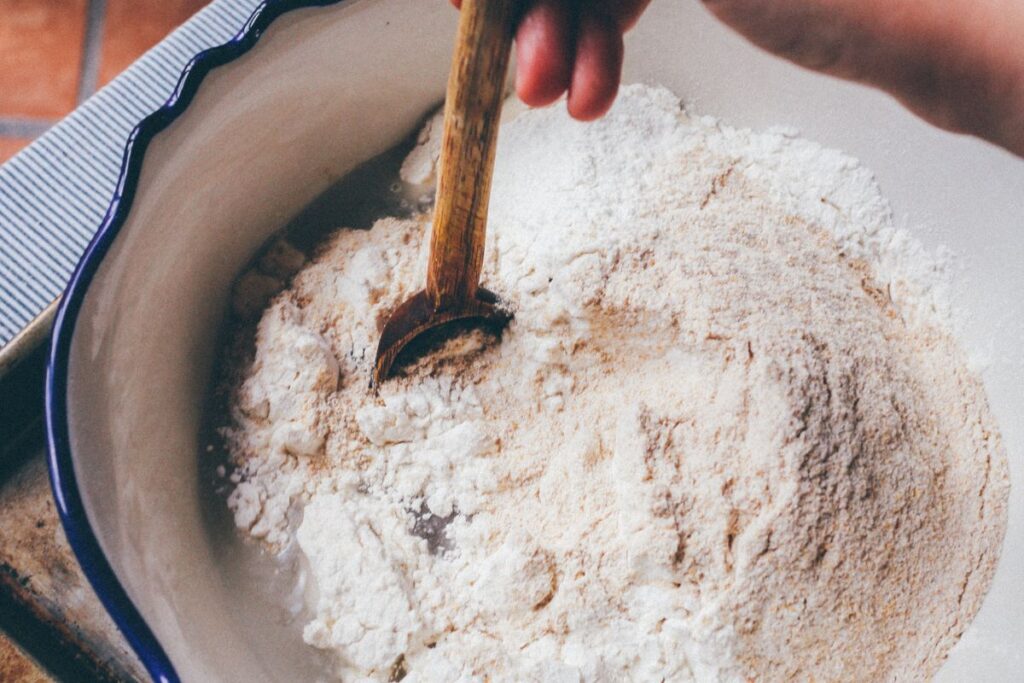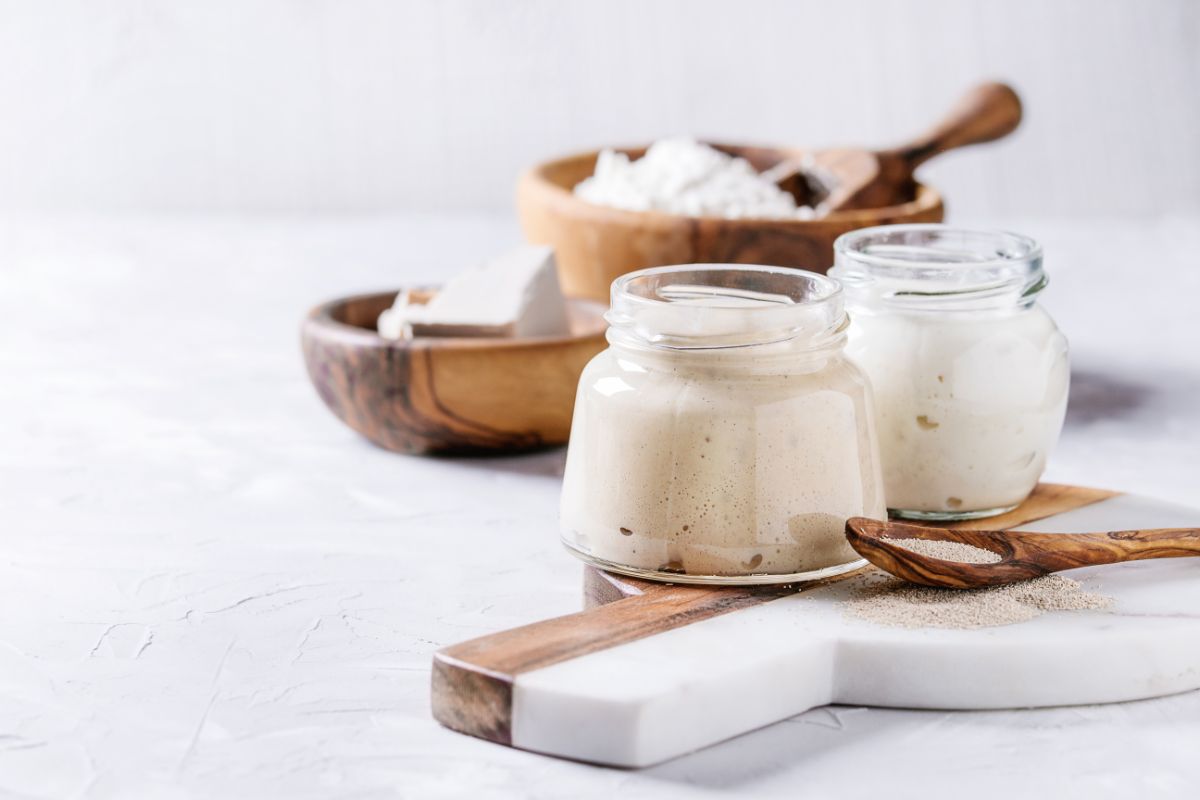In the world of baking, sourdough has risen to prominence for its unique taste, texture, and health benefits. Yet, many are left pondering about the fate of sourdough discard – the portion often cast aside during the sourdough starter feeding process. Before you think about tossing it into the bin, let’s knead through its potential together. The journey into the heart of sourdough discard is about to transform your baking adventures. For those eager to dive deeper into the enchanting world of sourdough, don’t miss out on exploring “The Magic of Sourdough Discard”, a treasure trove of insights and recipes that celebrate this versatile ingredient.
Understanding Sourdough Discard
What is Sourdough Discard?
Sourdough discard, the seemingly unassuming byproduct of maintaining a sourdough starter, is often overlooked in the baking process. It’s the portion of the starter that’s removed before feeding it with fresh flour and water to keep the yeast alive and kicking. But, before you think about tossing it into the bin, let’s knead through its potential together.
The Rising Popularity of Sourdough Baking
The world of baking has rediscovered its passion for sourdough, a method as ancient as bread itself. This renewed interest goes beyond the desire to bake the perfect loaf. It’s about reconnecting with a long-standing tradition. It involves understanding the fermentation process. It’s also about the joy of creating something from simple ingredients. Sourdough is more than just bread. It is a living, breathing entity that requires care, attention, and creativity.
To grasp the concept of sourdough discard, we must first understand the art and science of sourdough baking. Each loaf narrates a tale of patience and passion. Here, the discard plays a crucial role. It is far from waste. This surplus starter is a versatile ingredient. It invites exploration. It promises a realm of flavors and textures beyond the traditional loaf.
Health Benefits and Nutritional Insights
Nutritional Composition
Sourdough discard isn’t just a byproduct of your sourdough starter’s routine feeding; it’s a treasure trove of nutritional benefits. The fermentation process that breathes life into sourdough also imparts sourdough discard with a unique set of properties. Fermentation breaks down the phytates found in flour, enhancing the bioavailability of nutrients. This means that the minerals in sourdough discard, such as iron, magnesium, and zinc, are more readily absorbed by your body. Furthermore, the lactic acid bacteria present in the discard contribute to a mildly tangy flavor while also creating an environment that benefits digestive health.
Probiotics and Digestive Health
Let’s “digest” this information further. While the baking process may reduce the probiotic content, sourdough discard still contains lactic acid bacteria, which are beneficial for gut health. These friendly bacteria can help maintain a healthy balance in your gut flora, supporting digestion and potentially boosting your immune system. Including sourdough discard in your diet means you’re not just adding flavor and texture to your dishes; you’re also incorporating elements that favor your digestive well-being.
Vitamins and Minerals in Sourdough
Diving deeper into the nutritional pool, sourdough discard offers more than just improved mineral absorption. It is a source of B vitamins. These include thiamine, folate, and niacin. They play crucial roles in energy metabolism and nervous system health. Fermented foods like sourdough discard contain antioxidants. These antioxidants contribute to your overall health. They help combat oxidative stress and inflammation.
The health benefits and nutritional insights into sourdough discard open up a world of possibilities. These are for those looking to maximize their sourdough baking adventures. By incorporating this flavorful byproduct into your diet, you achieve two things. You minimize waste. You also embrace a more nutritious and wholesome approach to baking and cooking.
Culinary Uses of Sourdough Discard
Sourdough Discard Recipes and Ideas
Who knew that the excess from sourdough could be the secret ingredient to elevate your cooking game? From pancakes and waffles to crackers and cakes, the possibilities are as boundless as your creativity. The slight tanginess of the discard adds a subtle depth of flavor that can transform even the simplest recipes into gourmet creations. Imagine starting your day with fluffy sourdough pancakes, or snacking on crispy sourdough crackers that you made from scratch. The best part? You’re not only reducing waste but also adding nutritional value to your meals.
Tips for Storing and Utilizing Discard
Managing this byproduct might seem challenging at first, but with a few tips, you’ll master it quickly. Initially, storing it in the refrigerator or freezing for extended periods can help you gather enough for a recipe. When it’s time to use, remember it can substitute some of the flour and water in most recipes. A good starting point is using about half a cup for every ¼ cup of flour and ¼ cup of liquid needed. You may need to make adjustments, so don’t hesitate to experiment to achieve the taste you desire.
Incorporating it into your cooking not only introduces a distinctive flair to your meals but also promotes eco-friendly kitchen habits. By delving into its culinary uses, you enter a realm where every ingredient is valued, ensuring nothing is wasted.
Environmental and Economic Considerations
Impact on Food Waste
In an era where sustainability is not just a trend but a necessity, sourdough discard presents an opportunity to marry culinary creativity with environmental responsibility. Every bit of discard repurposed into delicious meals is a small victory against food waste. In kitchens worldwide, bakers and chefs are finding innovative ways to use this byproduct, reflecting a broader movement towards zero-waste cooking. This practice not only benefits our planet by reducing the amount of organic waste but also encourages a more mindful approach to the resources we use in our daily lives.

Cost-Effectiveness of Using Discard
Beyond the environmental impact, utilizing sourdough discard can also be seen through an economic lens. Flour, water, and time—while seemingly simple—constitute an investment in your sourdough starter. Throwing away the discard is akin to tossing money into the trash. By finding uses for sourdough discard, you’re maximizing your investment and enhancing your culinary repertoire without additional expenses. This approach not only fosters a sustainable kitchen but also promotes a culture of resourcefulness and innovation in cooking.
Potential Drawbacks
Allergens and Dietary Restrictions
While there are many benefits to adding sourdough discard to your diet, caution is important. For those with gluten intolerance or celiac disease, traditional sourdough discard may not be suitable. It contains gluten. However, this limitation does not end creativity. Gluten-free sourdough starters are becoming popular. They offer an alternative for those wanting to enjoy sourdough’s benefits without the gluten.
Limitations in Use
Embracing sourdough discard in your culinary creations does come with its set of challenges. The unique tangy flavor, while a boon to many dishes, may not blend well with every recipe. Furthermore, the acidic nature of the discard can affect the texture of baked goods, requiring adjustments in leavening agents or baking times. It’s this dance of balance and adjustment that makes cooking with sourdough discard both an art and a science.
Despite these potential drawbacks, the journey into the world of sourdough discard is filled with discovery, innovation, and sustainability. As we continue to explore the multifaceted roles of sourdough discard, we’re reminded of the importance of approaching our culinary practices with mindfulness, creativity, and a willingness to experiment.
FAQs
Is sourdough discard safe to eat?
Absolutely! It’s perfectly safe to eat, provided your sourdough starter has been well-maintained. The natural fermentation process not only develops the characteristic tangy flavor but also creates an acidic environment that discourages the growth of harmful bacteria. However, if your discard or starter shows signs of mold or has an off smell, it’s best to err on the side of caution and start anew.
How long can you keep sourdough discard?
Sourdough discard can be stored in the refrigerator for up to a week, making it a versatile ingredient to have on hand for a variety of recipes. For longer storage, you can freeze the discard in airtight containers or freezer bags for several months. Just remember to thaw it in the refrigerator before use and give it a good stir, as separation may occur.
Can sourdough discard replace flour in recipes?
Yes, sourdough discard can replace some of the flour and water in many recipes. It’s an excellent way to add depth of flavor and tender texture to baked goods. When substituting, consider the hydration level of your discard and adjust the quantities of other liquid ingredients accordingly to maintain the desired consistency of your dough or batter.

Conclusion
As we conclude our exploration of sourdough discard, it’s clear that this byproduct of sourdough baking holds untapped potential that extends far beyond the confines of the bread bowl. Whether you’re a novice baker or a seasoned culinary artist, incorporating Sourdough Waste into your recipes offers a unique opportunity to enhance flavors, improve nutrition, and contribute to a more sustainable cooking practice.

